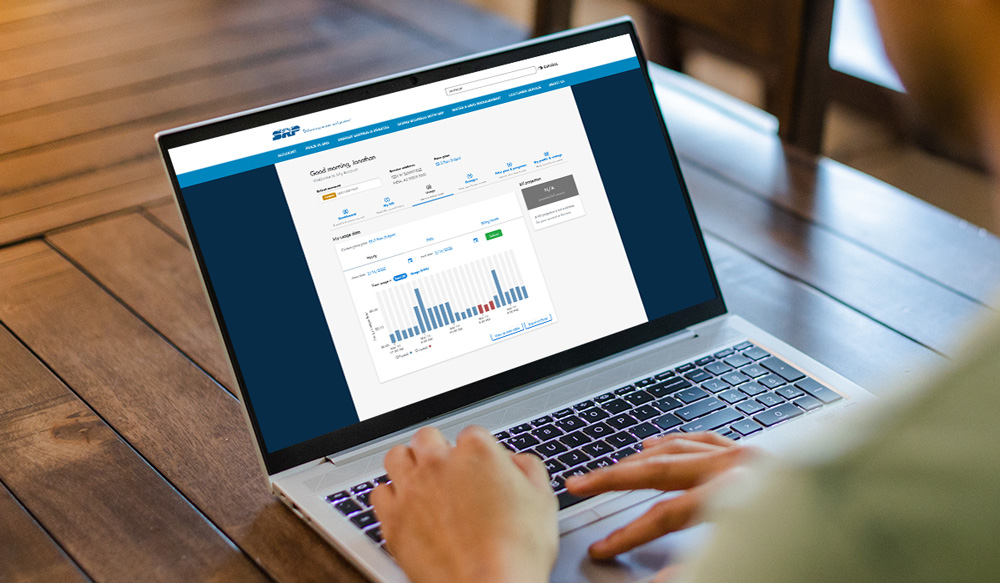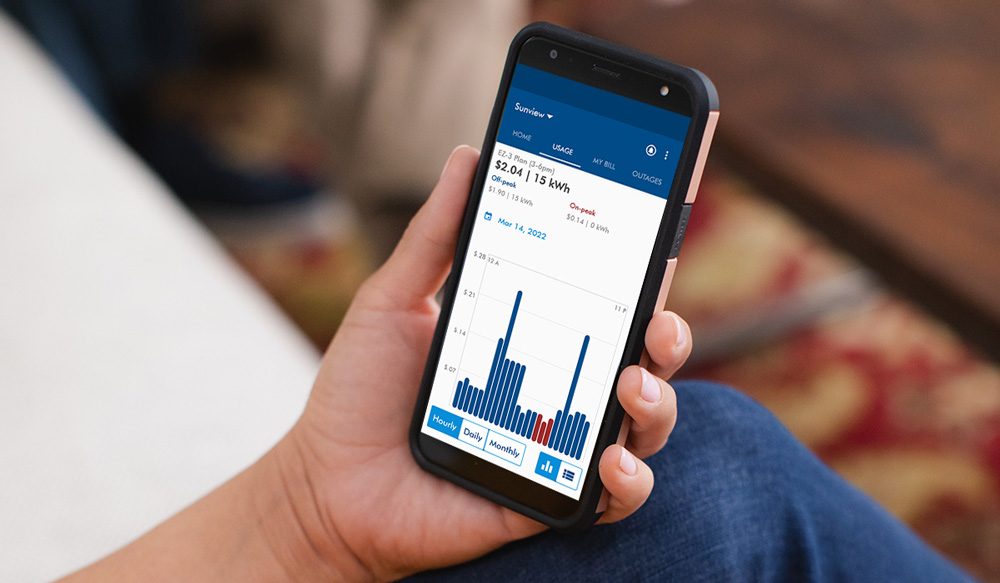
How to save on solar and demand price plans
If you generate your own solar energy, shifting your energy use to certain times of the day can help you save money on your bill. Learn more about how energy demand works and explore price plans that work with different lifestyles and needs.
On this page:
On related pages:
Saving on solar and demand price plans
Similar to our time-of-day price plans, our solar and demand price plans offer price breaks for customers who can shift their energy use to off-peak hours and keep their household demand for energy low by using appliances one at a time.
- Customer Generation Plan — For customers who are able to maintain their demand at moderate levels. Save by actively tracking and managing your energy use and using most energy during off-peak hours.
- Average Demand Plan — For customers who can shift energy use to off-peak hours but don’t want to worry about occasional spikes in demand.
- Time-of-Use Export Plan — No monthly demand charge. Save by using energy you’ve generated and limiting your use of grid energy to off-peak hours.
- Electric Vehicle Export Plan — No monthly demand charge. If you have rooftop solar and an electric vehicle, you can save by charging overnight during super off-peak hours.
- Residential Demand Price Plan Pilot — The lowest residential prices we offer. Save by staggering the usage of your electrical appliances during on-peak hours and shifting large-appliance usage to off-peak hours as much as possible. No rooftop solar required.
What is demand and why does it matter?
To understand demand, it’s important to also know how energy, or consumption, works. Demand is the amount of power your home uses at any given point in time, measured in kilowatts (kW). Although related, energy measures how much power you use over a given period of time, measured in kilowatt-hours (kWh).
SRP's demand charges are based on demand measured during 30-minute intervals during on-peak hours. Choosing the demand price plan above that best matches your lifestyle and needs is an important factor when it comes to saving money.
For example, the Customer Generation Plan bills on the highest 30-minute on-peak interval during the month, while the Average Demand Plan averages the daily maximum demands over the month. To avoid high demand charges, stagger your use of large electrical appliances during on-peak periods and limit their use to off-peak hours as much as possible.
Tips to minimize demand
Pool pump |
|
Oven |
|
Washing machine |
|
Water heater |
|
Electric vehicles |
|
Air conditioner |
|
Delayed start button |
Peak demand and solar
To save on a demand plan, it’s important to avoid pulling energy from SRP’s grid during peak hours. Your house will pull power from the grid anytime your energy use exceeds what you’ve generated. During peak hours, grid energy is most expensive because that’s when demand is highest. To avoid pulling energy from the grid when rates are highest, limit your energy use during peak hours — use major electrical appliances either before or after instead.
Benefits of battery storage
Batteries store excess power for future use and give you greater control over how and when you’re using energy. Depending on your price plan and how your batteries are set up, it may be advantageous to pull energy from the grid during off-peak hours to cover your on-peak usage. For example, charging your batteries at night for use during the day.
Ways to manage energy demand
One of the best ways to manage energy demand is by installing a demand management system (DMS). A DMS is an innovative technology that lets you automate when major appliances run during on-peak hours to make sure they don't run at the same time. With a demand management system, you can:
- Monitor and control your home's electric load.
- Reduce peak demand costs and help reduce your electric bill.
- Optimize when your home uses energy.
- Add convenience with set-and-forget operation.
Find out how much power you use

DEMAND CALCULATOR
Check out our demand calculator to get a better idea of how much power you’re using at home.
Go to calculator.
SRP MY ACCOUNT™
To see when your home uses the most energy, log in to SRP My Account and view your hourly usage chart.
Log in.
SRP POWER MOBILE APPS
Access your account from anywhere – make payments, view outages and more.
Download.

